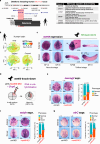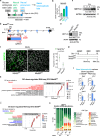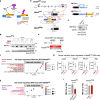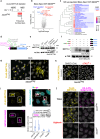METTL9 sustains vertebrate neural development primarily via non-catalytic functions
- PMID: 40745158
- PMCID: PMC12313917
- DOI: 10.1038/s41467-025-62414-5
METTL9 sustains vertebrate neural development primarily via non-catalytic functions
Abstract
METTL9 is an enzyme catalysing N1-methylation of histidine residues (1MH) within eukaryotic proteins. Given its high expression in vertebrate nervous system and its potential association with neurodevelopmental delay, we dissected Mettl9 role during neural development. We generated three distinct mouse embryonic stem cell lines: a complete Mettl9 knock-out (KO), an inducible METTL9 Degron and a line endogenously expressing a catalytically inactive protein, and assessed their ability to undergo neural differentiation. In parallel, we down-regulated mettl9 in Xenopus laevis embryos and characterised their neural development. Our multi-omics data indicate that METTL9 exerts a conserved role in sustaining vertebrate neurogenesis. This is largely independent of its catalytic activity and occurs through modulation of the secretory pathway. METTL9 interacts with key regulators of cellular transport, endocytosis and Golgi integrity; moreover, in Mettl9KO cells Golgi becomes fragmented. Overall, we demonstrate a developmental function of Mettl9 and link it to a 1MH-independent pathway, namely, the maintenance of the secretory system, which is essential throughout neural development.
© 2025. The Author(s).
Conflict of interest statement
Competing interests: T.K. is a co-founder of Abcam Plc and Storm Therapeutics Ltd, Cambridge, UK. The other authors declare no competing interests.
Figures








References
MeSH terms
Substances
Grants and funding
LinkOut - more resources
Full Text Sources
Research Materials

